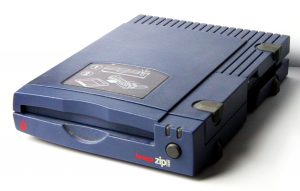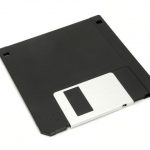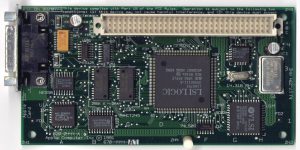For reference by my future self, and for anyone that might want to duplicate my setup, I’ve documented how I’ve setup the 32GB SD card for my SCSI2SD that I use with my LC 475 with my Apple IIe card. Currently I have my SCSI2SD set up as 3 devices, SCSI 0 to 2, this is for two reasons: so I don’t have to update my SCSI2SD settings when I want to test one of my drive images as device 0, and so I can have 4 ProDOS partitions (limit 2 per drive).
3 CommentsSteve's Blog Posts
Technical Note QD01 – 32-Bit QuickDraw: Version 1.2 Features
This Technical Note describes the changes and enhancements to 32-Bit QuickDraw from version 1.0 (as shipped on the original Color Disk) to version 1.2, which ships with System Software 6.0.5 and later. This Note assumes familiarity with Inside Macintosh, Volume V, Color QuickDraw, and 32-Bit QuickDraw release notes. [Apr 01 1990]
I’ve included this in my blog as background information for the discovery that it was the move from 24-bit to 32-bit quickdraw that “broke” Sierra’s AGI games on the Macintosh.
1 CommentSierra AGI: 68k Macintosh and Sierra AGI games
I’ve been a fan of Sierra games since 1988 when I bought a Tandy 1000SX as my first high school computer and picked up the Sierra Value Pack with Thexder, Helicopter Simulator, and Space Quest II at the same time. So when I first started playing around with old Macs in the late 90s (when they were dirt cheap and easy to find), I quickly found out that the Sierra AGI games were not well supported in the Macintosh world.
9 CommentsMidi: Roland MT-32 Midi emulation for a 68k Macintosh
I’ve always had a soft spot for the Sierra quest series, LucasArt and similar games of the 80s and early 90s. Recently I dug them out again to play on in DosBOX with MUNT (Roland MT-32 emulator) enabled to hear the amazing (for the time) orchestrated music. As part of setting up MUNT on my PC I discovered that you can also send MIDI music to MUNT via a USB connection, so I thought, why not see if I can use my laptop as an emulated MT-32 for my LC 475 mac. These instructions should also work for a real MT-32 or CM-32L system.
Leave a CommentApple IIe Card: Using an Apple IIe Emulator Card in your 68k Macintosh
Back in the early 2000s I managed to buy a couple of Apple IIe PDS cards (at a price far less then they go for now). Over the years I’ve learned several tricks for how to use these cards as a way of bridging the old Apple II systems, through a classic Macintosh to modern systems. A lot of what I’ve discovered is less useful now with things like ADTPro, and FloppyEMU, but I’ve decided to start documenting what I’ve discovered in case someone else is setting up one of these cards.
13 CommentsMAME: Using MAME o edit my Macintosh 68k bootable image files
You likely already know what MAME is, but if not, the simplest description is a multi-purpose emulator. Most people use it to emulate old arcade systems and gaming consoles, but it also provide support for several of the 68k Macintosh Systems (search the page for mac.c). For this blog entry I’m going to walk through setting up MAME to emulate a Macintosh Plus with the assumption your using MAME instead of Basilisk II because you want to initialize and partition an image file that you created from a physical drive, SD card etc.
4 CommentsSoftMac: Using SoftMac to edit my Macintosh 68k bootable image files and create your own
One of the most popular features of my site is my ready made System 6.0.8 or System 7.5.5 bootable images for use with 68k Macintosh systems. This entry describes how you can use SoftMac XP 8.2 or 9.0 beta to edit my images and create your own drive and volume images (up to 2.74GB) on Windows 10 (I did experience glitches if you switch from SoftMac to another window and switch back, SoftMac often locks up and has to be killed in task manager)
5 CommentsSystem 7.5.5: Editing my Macintosh 68k bootable images to add the full version of System 7.5.5
In my previous blog entries I mentioned that I could not include the full version of System 7.5.5 with my drive images due to copyright restrictions, but you can install the full version of the North American version of 7.5.5 using Apple’s Legacy Software Recovery CD, if you want to install one of the other versions you need to use either disk images from Apple’s FTP site the Internet Archive, or from Apple’s Developer CDs.
System 6.0.8: Editing my Macintosh 68k bootable images to add the full version of System 6.0.8
In my previous blog entries I mentioned that I could not include the full version of System 7.5.5 or System 6.0.8 with my drive images due to copyright restrictions, but you could download the full versions from Apple’s FTP site…. that option is gone, and is now replaced with the files being available from the Internet Archive. So if you are using one of the drive image files I created with minimum versions of System 6.0.8 and System 7.5.5 this guide will tell you how to update to the full version of 6.0.8.
2 CommentsInitializing and Partitioning your real and emulated drives for a your 68k Macintosh
One of the most popular entries on my site is my guide to setting up a SCSI2SD adapter with one of my ready made System 6.0.8 or System 7.5.5 images for use with 68k Macintosh systems. This entry describes the different ways to initialize your drive, or drive image.
DD: Using DD to create and write disk images
With SCSI being essentially obsolete, and the fact that Macintosh systems (since OS X 10.6 I think) can no longer write to HFS formatted disks, the best way to use modern systems when setting up your classic 68k system is to create a bootable drive image using a Macintosh 68k or PowerPC emulator then writing that disk image to a real or emulated disk drive. This guide is written for Disk Duplicator (DD) is a standard application that can be used for imaging hard drives, removable drives, memory cards, usb keys, and CD ROMs.
51 CommentsSCSI on Windows 10 64-bit and Windows 11: Adaptec AHA-2940 (29xx) Ultra, AIC-7870 (78xx), or 29320LPE Ultra 320 and LSI Logic
When I first started playing with 68k macintosh systems around 1999/2000 (a Macintosh Plus) I connected an external SCSI drive to my Windows 98 system and was able to use an early version of Basilisk II with SCSI pass-through to format the hard drive. Now 18 years later, SCSI is an obsolete technology, and in general is not supported under the latest versions of Windows and the the Macintosh OS, although I believe Linux still has support.
Luckily a skilled person on the internet has made 64-bit compatible drivers to support some of Adaptec’s cards under Windows 10 (sorry I’ve found nothing for the latest version of the Macintosh OS). I’ve personally tested the Windows 10 driver for Adaptec AHA-29xx cards with an AHA 2940U PCI card. Others have tested additional cards on Windows 10 and Windows 11.
182 CommentsBasilisk II: Using Basilisk II to edit my Macintosh 68k bootable image files
One of the most popular features of my site is my ready made System 6.0.8 or System 7.5.5 bootable images for use with 68k Macintosh systems. This entry describes how you can edit my images on Windows 10 using Basilisk II. You probably know what Basilisk II is, but if not, a quick summary: Basilisk II (manual) is an open source emulator of 68k-based Macintosh computers that support 32 bit memory (see section 2) that runs on Windows, OS X and Linux (also works on some other platforms).
5 CommentsSCSI2SD: Using a SCSI2SD adapter to setup your 68k Macintosh
I recently purchased a SCSI2SD V.5 adaptor (3.5″ and 2.5″) to replace a failing 1980s SCSI HD, and realized once I had it set up I could “image” the Micro-SD card to make boot-able images anyone could use.
97 CommentsHierarchical File System (HFS) Format Specifications (Apple KB Article 8647)
This is a copy of Apple Knowledge Base Article 8647 taken from a mirror of Apple’s KB site created in 2001 kb1max (for some reason…
Leave a CommentIomega Zip: Using a 100MB SCSI Iomega Zip Drive to setup your 68k Macintosh

I’ve recently been experimenting to see if I could somehow use of my old Iomega Zip drives (a 250MB USB version, and a 100MB SCSI) to move files between my Windows PC and my various 68k Macintosh Systems. After a bit of experimentation I discovered how I could not only move files, but also create a disk image that would allow me to use my Windows PC to make fully bootable Zip disks for use with any of the SCSI capable 68k Macintosh systems.
10 CommentsFloppy Drive: Using a 3.5″ HD Floppy Drive to setup your 68k Macintosh

Booting your classic 68k Macintosh from a 3.5 inch floppy disk was the most common and the easiest way to get most classic macs working when your starting with a more modern machine (most, but not all, more on that in a bit).
This post focuses on 3.5″ High Density (HD) disks that can be created using modern USB floppy drives.
Leave a CommentMacintosh System Enablers for OS 7.1 to 7.5.5: Current Versions and Change History
The information in this post was taken from an the Apple Knowledge Base article: System Enablers: Current Versions & Change History (TA28948) with the assumption that the source article may be removed in the future (like many other articles that dealt with the vintage systems). I have updated the table to link to copies of the System Enablers that are currently being hosted by the Internet Archive. For additional information on how to use these enablers see: Selecting your System Software
2 CommentsSelecting your System Software for your 68k Macintosh
As I mentioned in my Setting up your vintage (classic) 68k Macintosh not every Macintosh System can run every OS, for example System 7.5.5 was the last version to support the original Macintosh Systems with their Motorola 68000 (68k) processors, 7.6 required Systems with a 68030 and 32bit clean ROMs, with support for 68k processors ending with System 8.1. I also include some information about PPC systems, but my main focus for this page is 68k systems.
3 CommentsSetting up your vintage (classic) 68k Macintosh
I’ve been playing around with old Macintosh systems since the late 90s when Mac Plus systems were plentiful and cheap. Over the years I’ve learned, forgotten, and relearned information about these systems, often going months at a time when I do not get to play with these old machines, so I decided to create this site to record the information I found useful, or interesting about my 68k Macintosh systems. Hopefully this information will also be useful to others who are new to setting up, configuring and using these old Macintosh Systems.
1 Comment